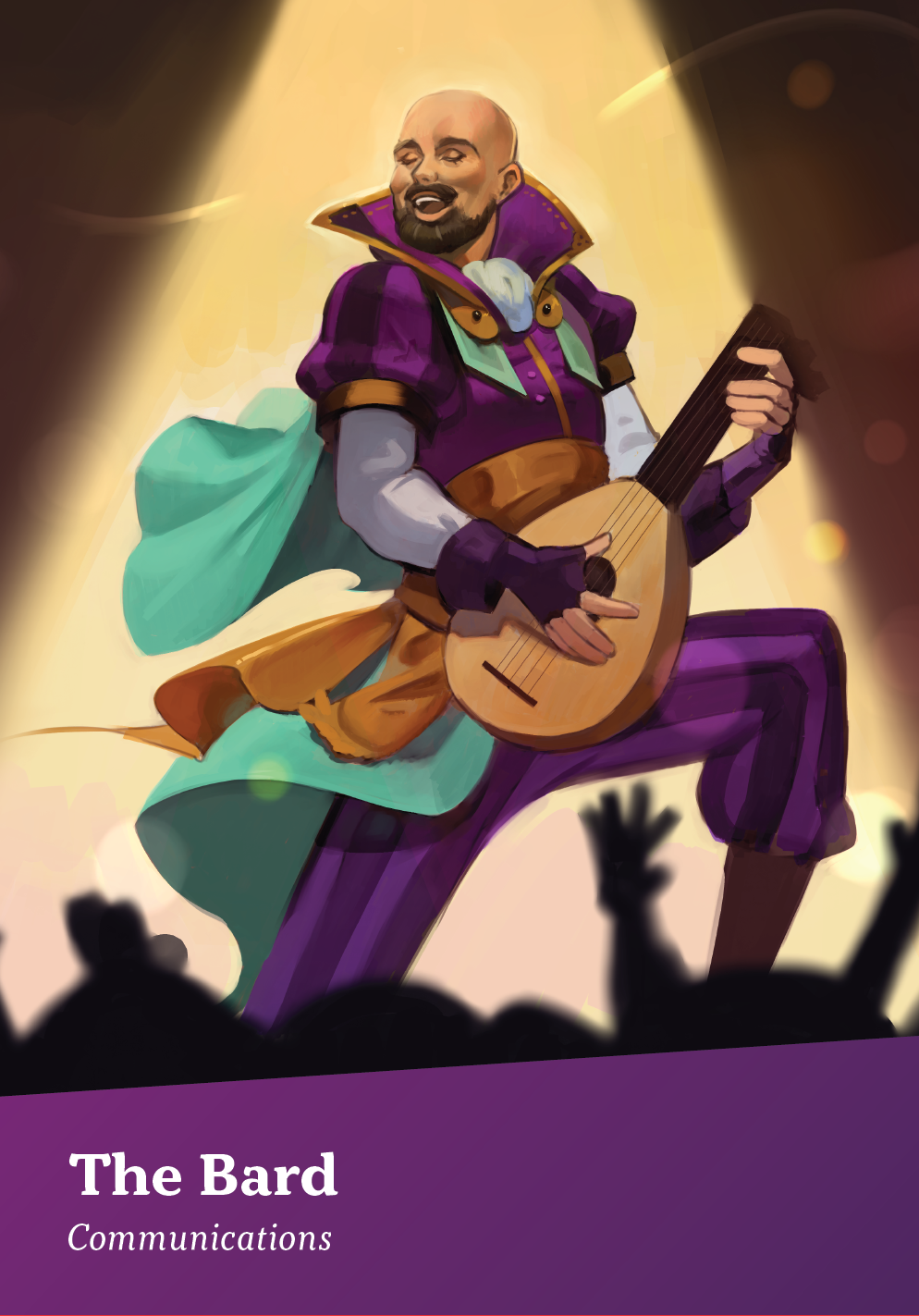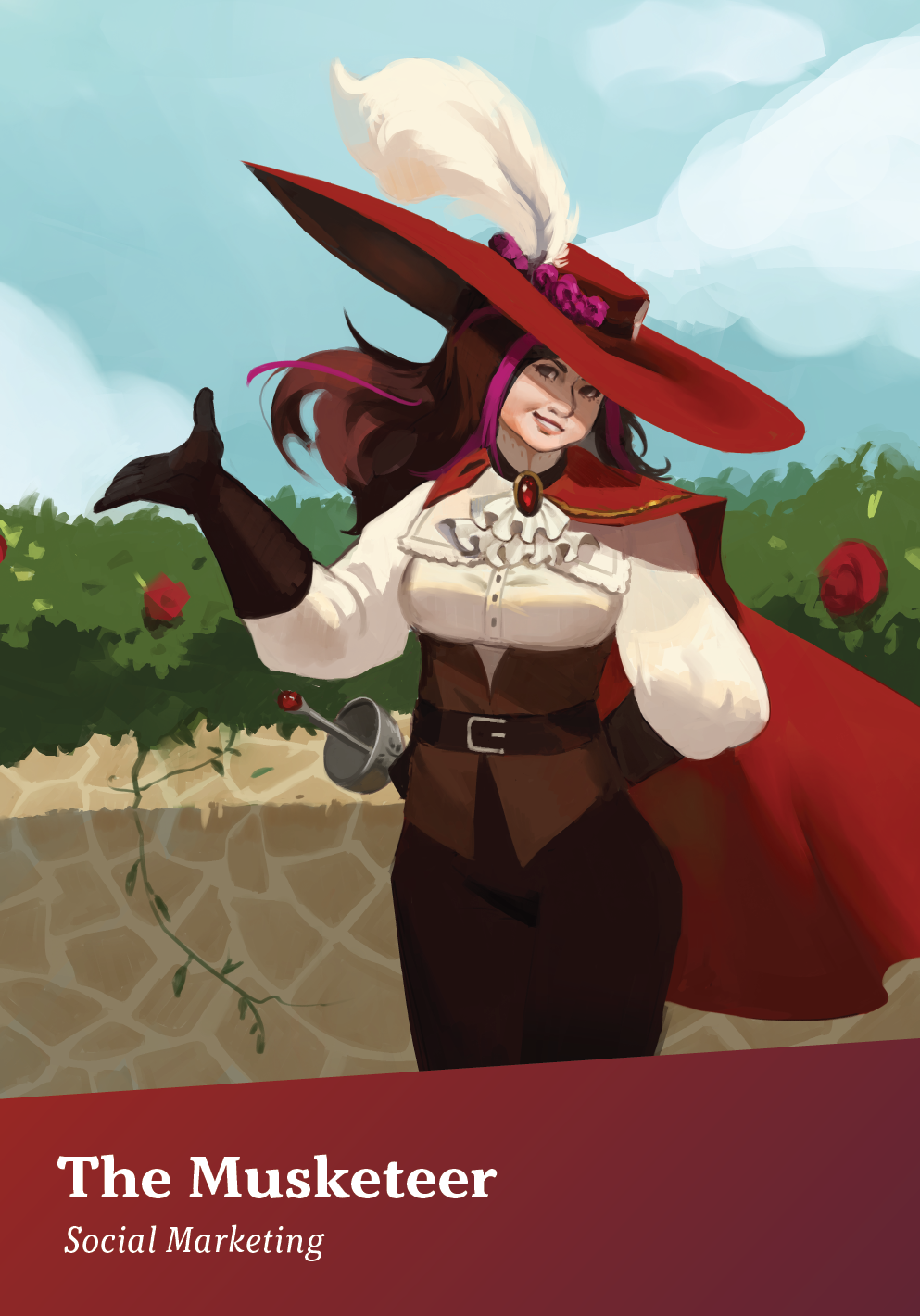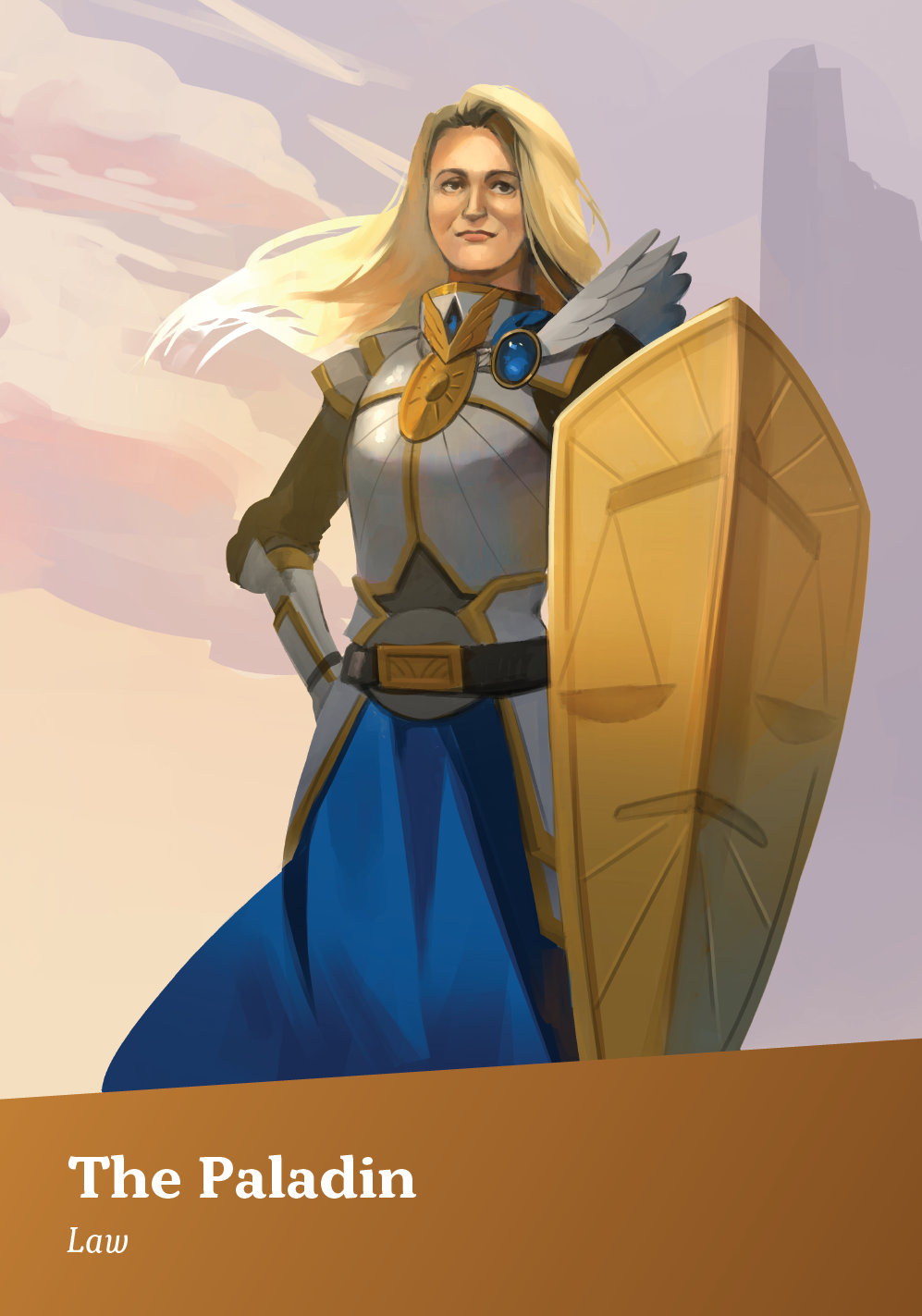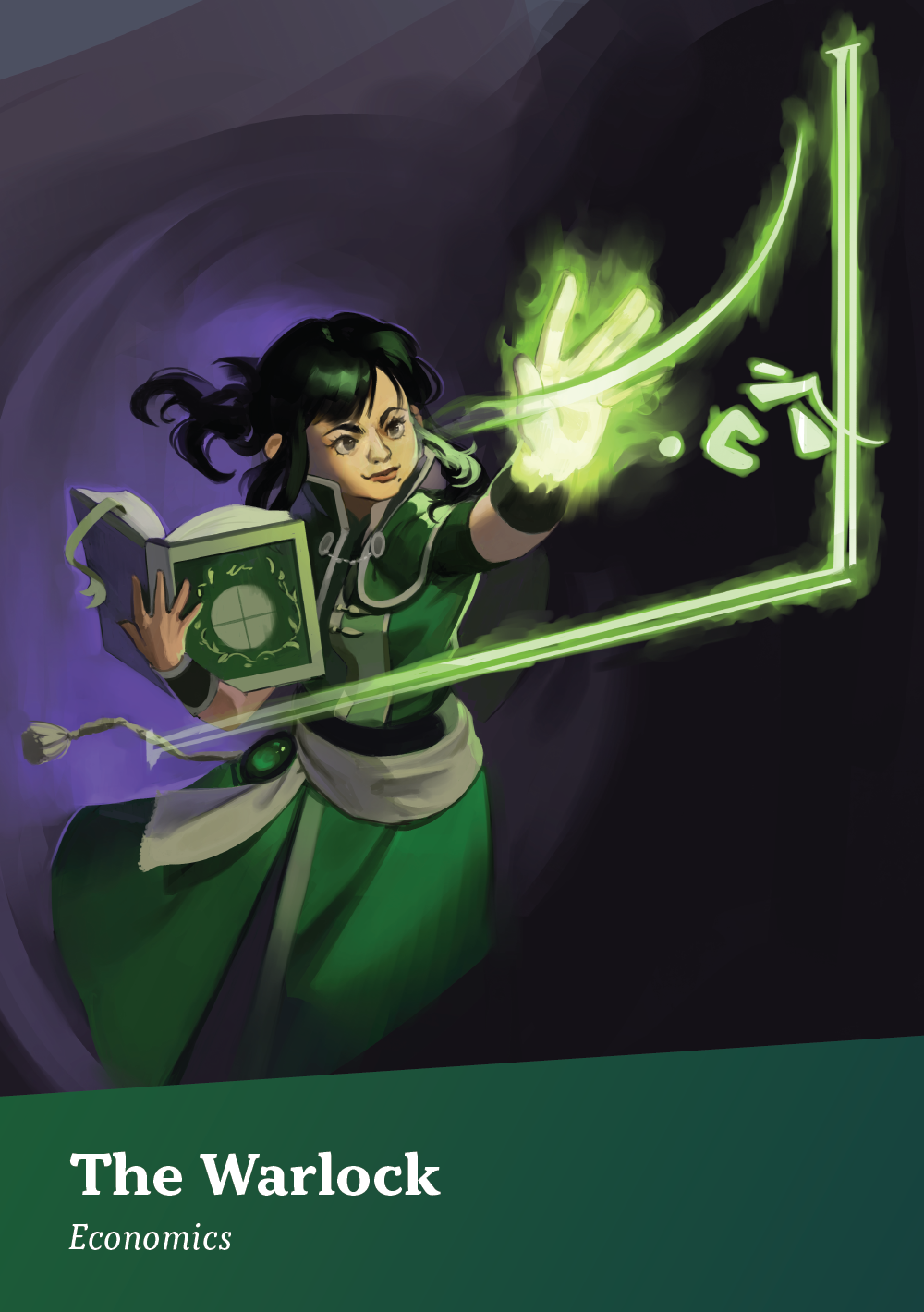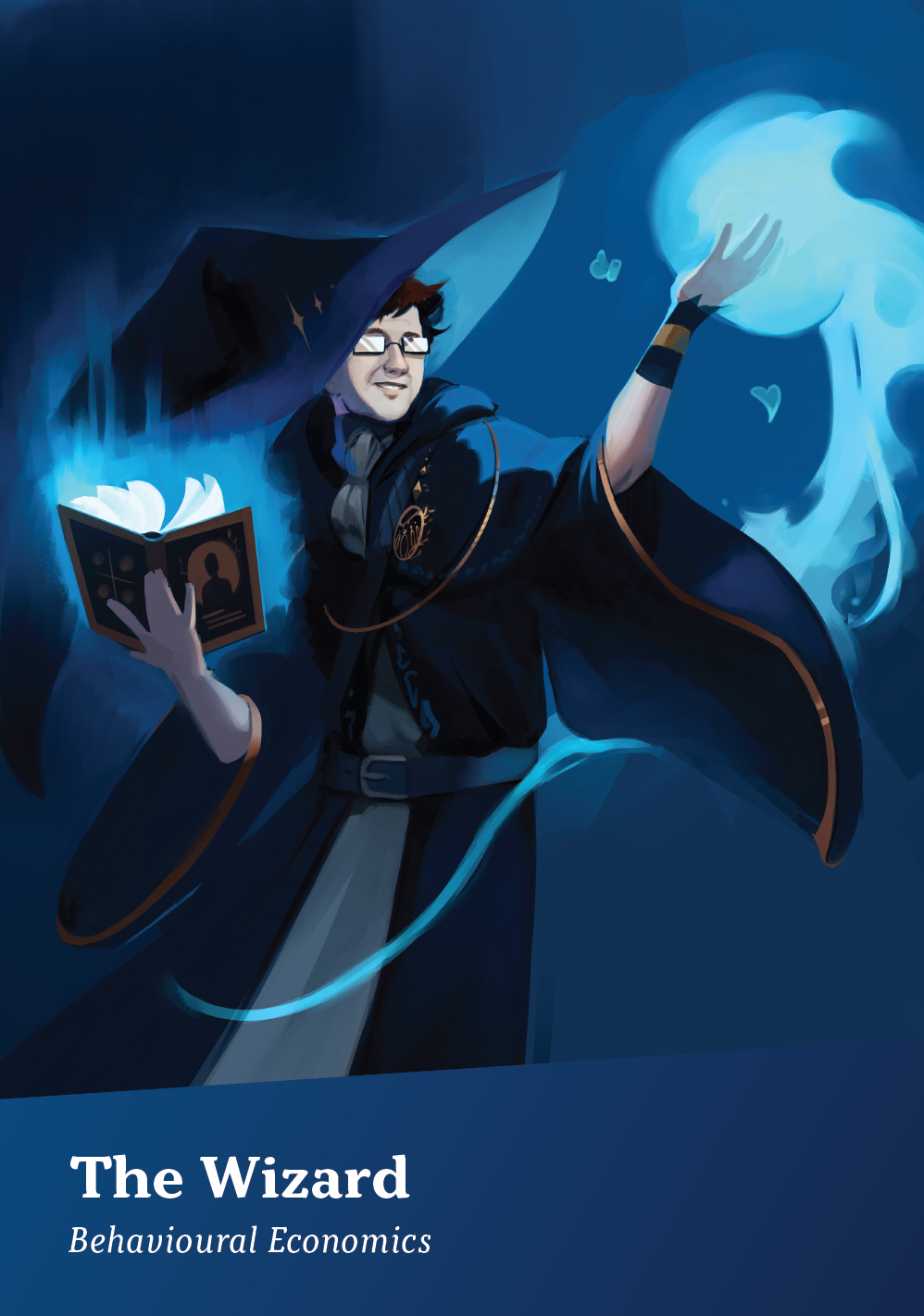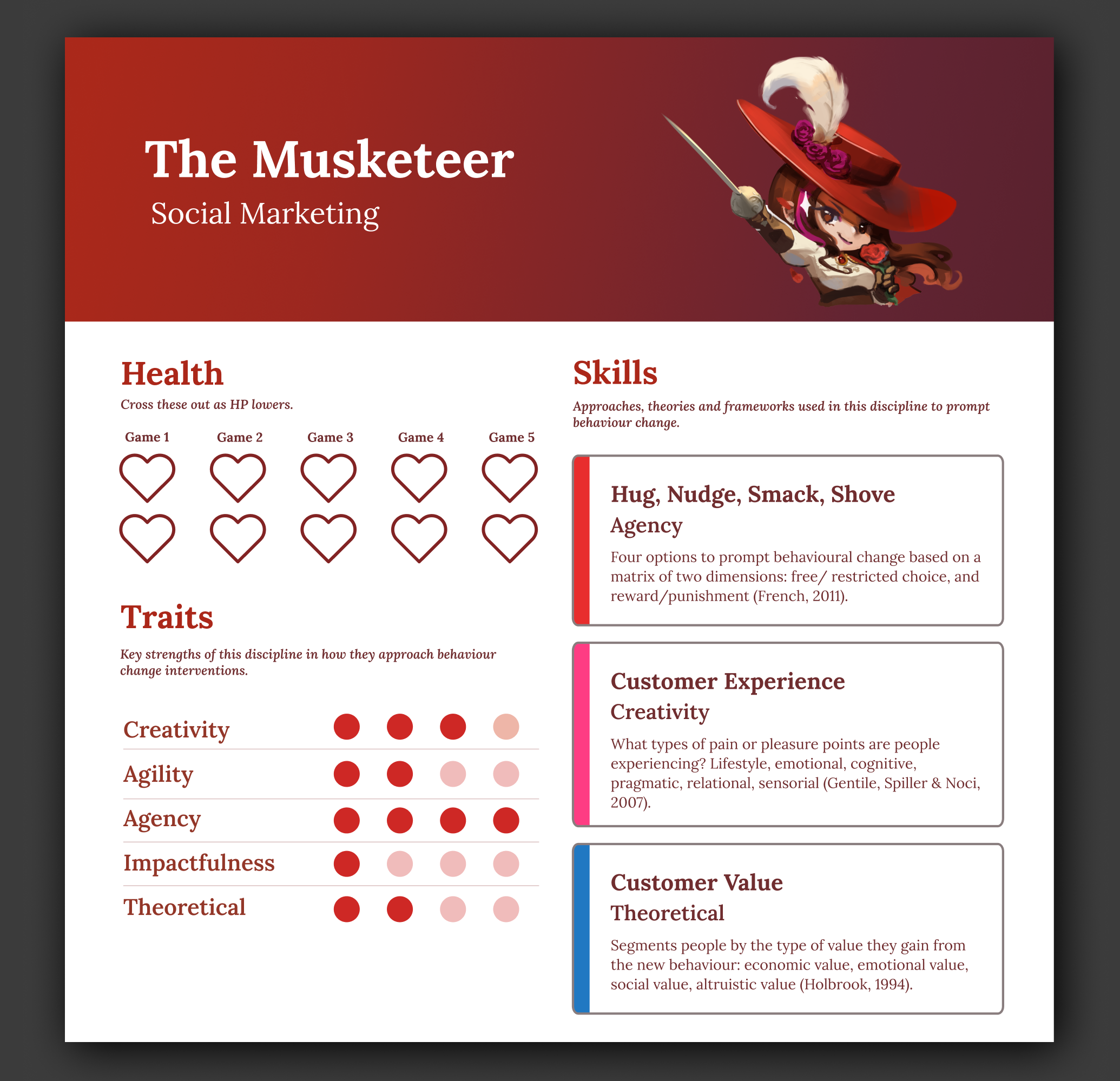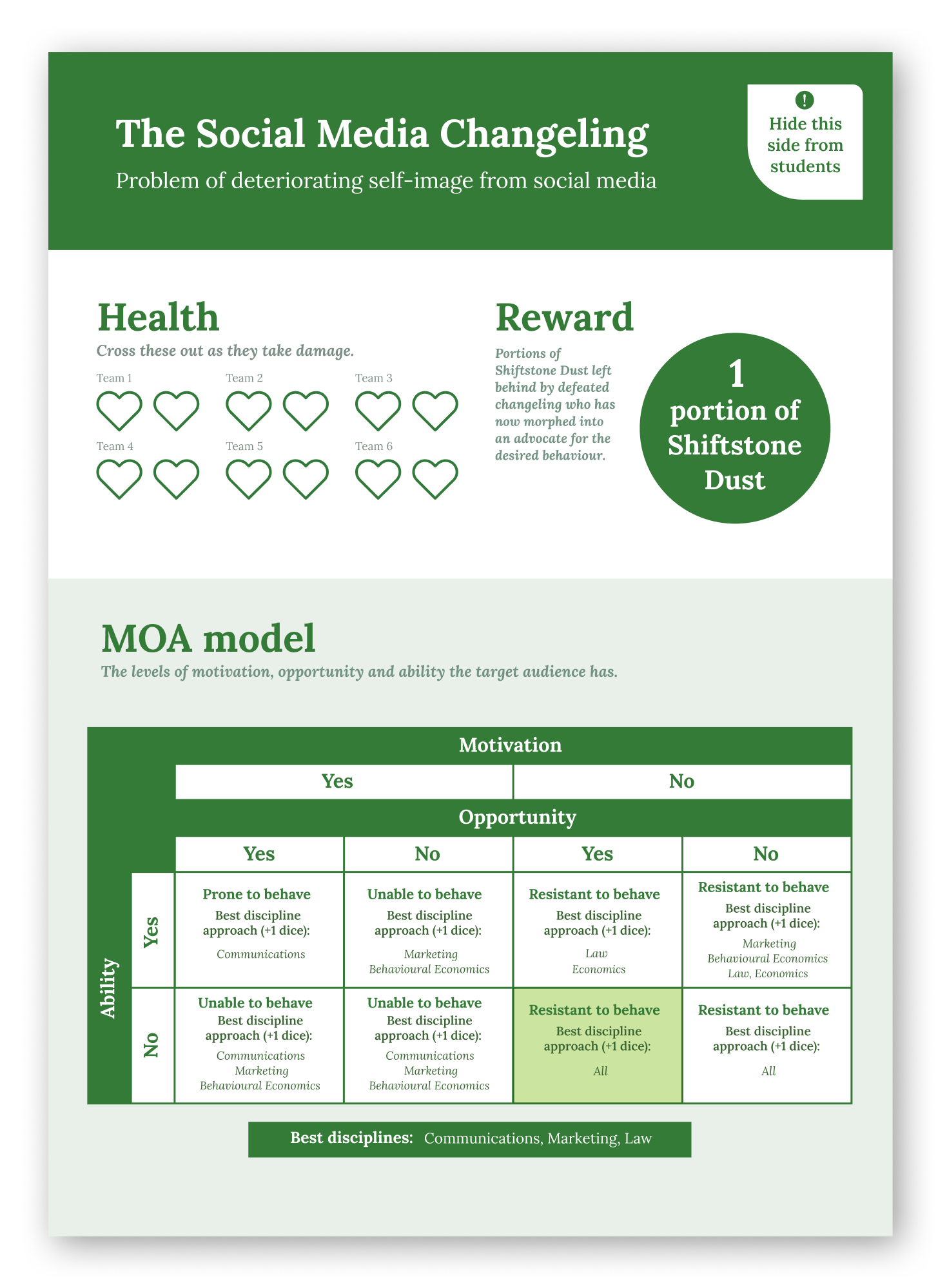Challenges and Changelings
A guide and resources on how to implement a Dungeons and Dragon’s style Imaginal Serious Game in your university class.
Who is this relevant for?
This page outlines a case study which implemented the game in a multi-disicplinary social behavioural change unit, and provides blank templates you can use to implement this into any unit where the aim is to change or influence behaviour.
You may find it relevant for:
Social behaviour change (i.e. health, sustainability, non-profits, social justice, etc.)
Consumer behaviour
Marketing communications
Innovation and design thinking
UX or product design and strategy
Education psychology or pedagogical design
Pitch competitions
Public policy
Developed by Brittany Currenti and Dr. Kate Letheren. Designs by Natalie Sketcher
At a glance…
Here’s how it works
⭐️ Students join forces and take on the role of characters representing one of five behaviour change disciplines - social marketing, communications, behavioural economics, economics, and law, showing them how each discipline brings unique strengths and skills to the table.
⭐️ Every week, teams confront a 'Changeling' representing a behavioural challenge, and must critically decide which discipline(s) are best suited to address the issue in order to be successful.
⭐️ Armed with their chosen character's 'skills' (theories and frameworks), students craft innovative strategies to overcome the barriers to change, winning points or receiving penalties.
⭐️ The teams face off the Changeling in a final battle, where their strategies are put to the test to see if they really address the social problem and utilise their learned frameworks correctly. The stronger the strategy, the more likely they will prevail.
Based on Imaginal Elements by Wu and Holsapple (2014)
-
Students embody the role of characters representing one of five behaviour change disciplines - social marketing, communications, behavioural economics, economics, and law. Changing their mindset to align with their character improves immersion, memory retention, and creative thinking.
-
To fully immerse students, the game is designed to be tactile so as to engage all the senses e.g. physical table top game play, printed character cards and strategy sheets. This enables them to put aside their worries of reality to focus on the moment.
-
High levels of fantasy through our changelings, characters and illustrations allows students to stretch their ideas beyond reality, allowing them levels of imagination and creative thinking beyond the normal.
&
Experiential learning Hierarchy
Based on the experiential learning hierarchy, the game requires the students to apply the frameworks they learn about as they play (do the behaviour), have fun and engage with the game through teamwork as they create strategies for behaviour change (feel), and finally learn (cognition) and retain the knowledge they’ve now actively used. Then from mid-semester onwards, students work in teams to tackle the biggest Changeling of all – a real world behavioural challenge from an industry or government client.
Now the Details…
The Characters (Disciplines)
The use of fantasy classes to represent each discipline allows us to create clear metaphors to allow students to quickly grasp the differences between the disciplines, which in real life is often complex and nuanced. For example, the Wizard was chosen to represent behavioural economics as the discipline includes techniques such as leveraging unconscious biases and using nudges to encourage behaviour change in a way that could be seen as almost ‘magical’ because it often happens without conscious awareness. Students role play as a chosen character/s, embodying the skills and strengths and changing their mindset to think like that character, immersing them in the experience.
-
The Bard | Communications
A highly creative minstrel, the Bard excels in crafting memorable, eye-catching campaigns with a flexible and agile approach.
-
The Musketeer | Social Marketing
A cunning swordsman, the Musketeer outmaneuvers barriers, using marketing techniques to reframe desired actions as more valuable than undesired ones.
-
The Paladin | Law
A firm hand of justice, the Paladin develops and then enforces rules to ensure compliance with desired behaviours, often providing the resources and funding required for an intervention to be feasible.
-
The Warlock | Economics
Connected with unseen forces, the Warlock controls interest rates, prices and inflation, seeking to minimize the costs and increase the benefits of desired actions and vice versa for undesired behaviours.
-
The Wizard | Behavioural Economics
A mystical spellcaster, the Wizard uses behavioural biases as ‘short cuts’ to unconsciously nudge people towards desired behaviours.
Character cards
-
A character skill refers to a key theory or framework the discipline uses for behavioural change. Students apply these skills to their strategies in the same way one would use a magic spell in D&D to defeat a monster.
-
These describe the key strengths and weaknesses of each discipline and works int he same way as character stats in D&D (e.g. wisdom, charisma, dexterity). The more points in a trait, the stronger the corresponding skill will perform.
-
Each character gets 2 health hearts per game. As they attack the changeling, they can lose health if they do not roll well. Lose all health and they fail to successfully implement their strategy. Students must defeat the changeling before it defeats them!
The Changelings
A “changeling” in folklore is a human-imitating creature that often manipulates, curses or tricks humans into performing behaviours they do not wish or intend to do. Our game presents social problems as ‘changelings’ which the students must fight and defeat to create positive behavioural change.
The changeling cards includes:
A description of the problem and target audience
The desired behaviour
Main barrier preventing behaviour
Main motivator that can be leveraged to promote the behaviour
To help students understand which discipline is best suited to a behaviour, we used a modified version of the MOA (motivation, opportunity, ability) model (Sheth & Frazier, 1982) and assigned this to each changeling.
Strategy Sheet
A template is used to assist students in formulating a strategy to defeat the changeling.
Students apply skills (theories and frameworks) from their chosen character/s.
They consider how their strategy will address the target audience’s barriers and motivations to behaviour change.
Once the students have determined their strategy and pitched it, the educator will calculate how many dice they can roll. Advantages/ disadvantages are given depending on the appropriateness of the strategies chosen; just like in the real world, certain problems are better tackled by certain disciplines or approaches.

